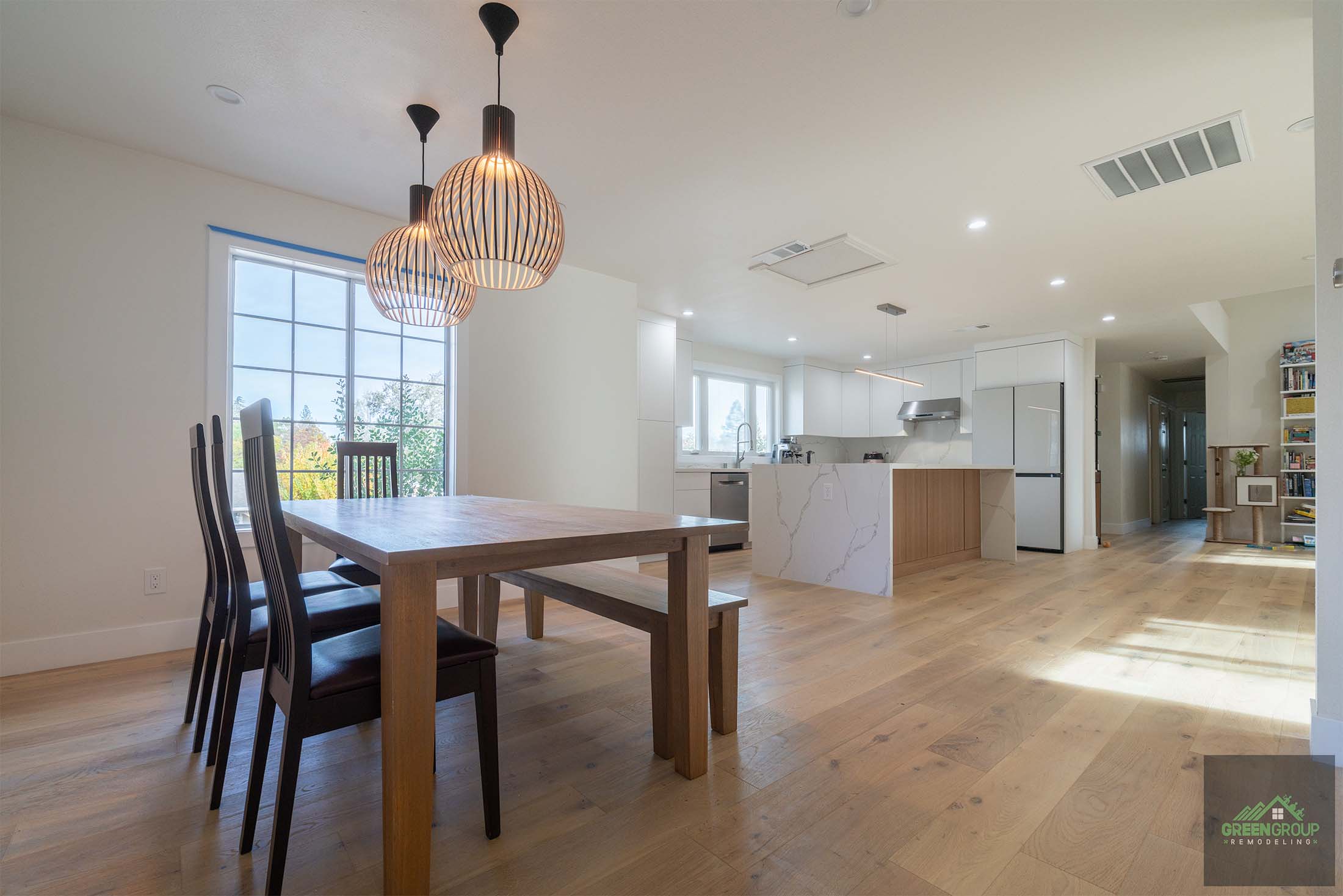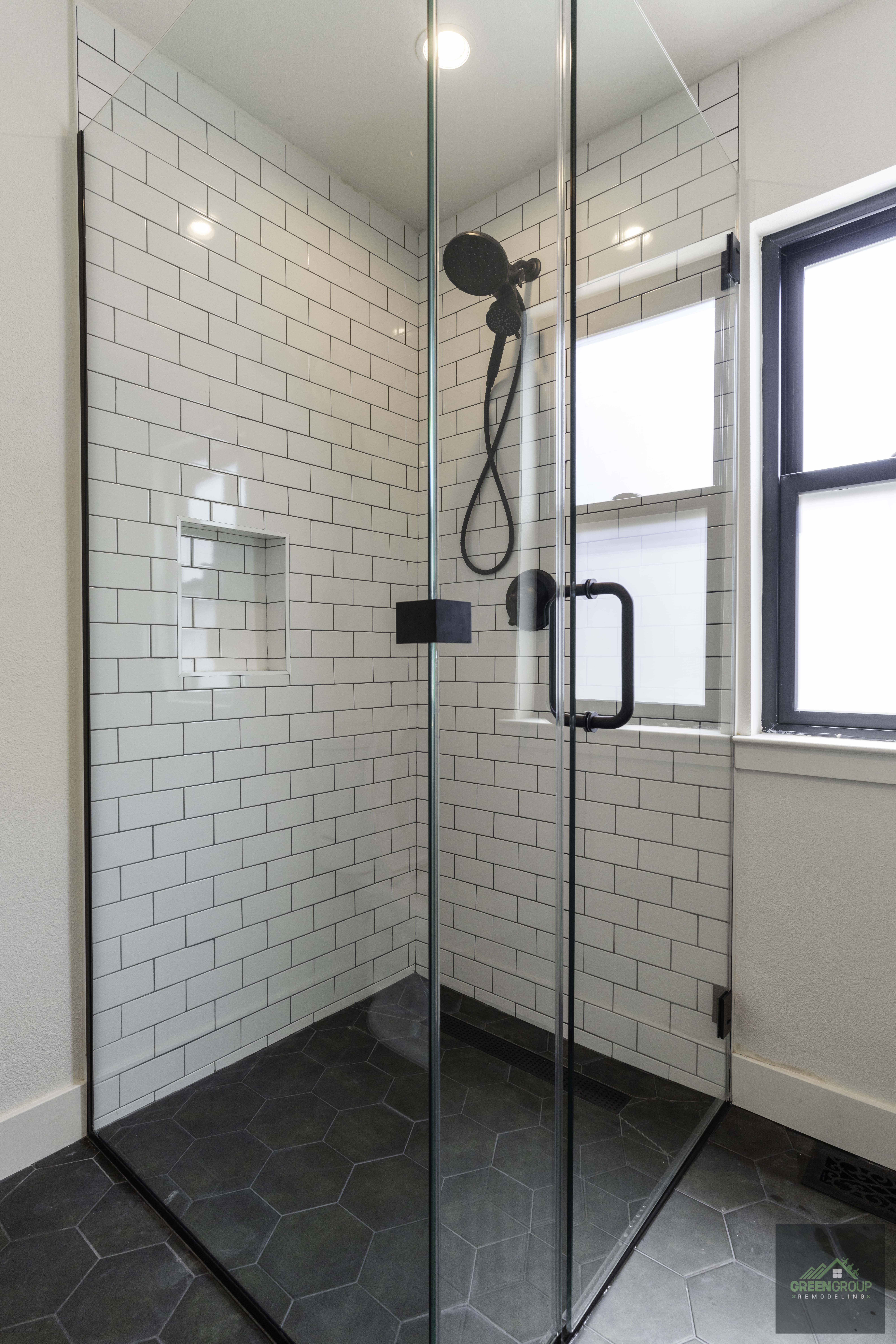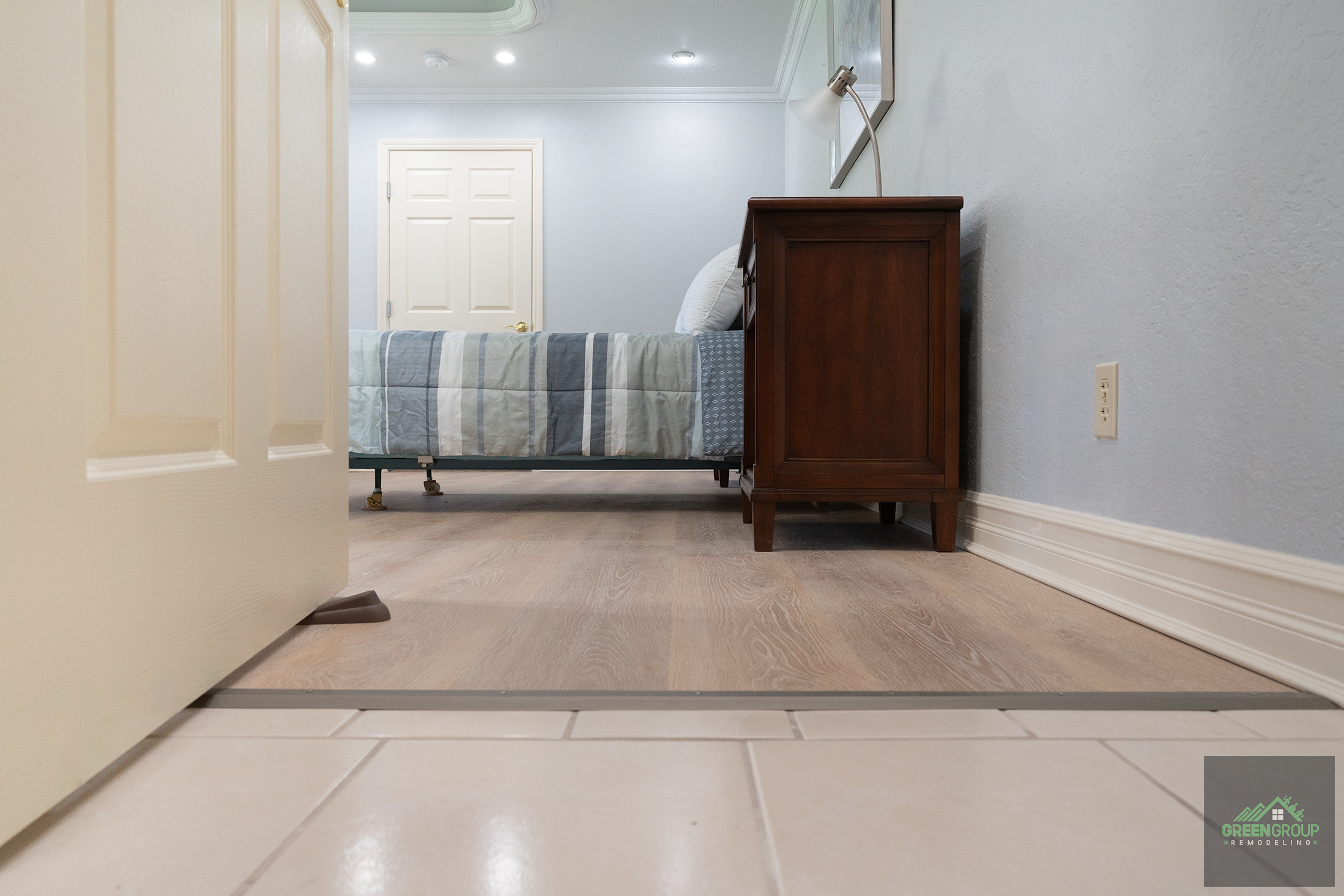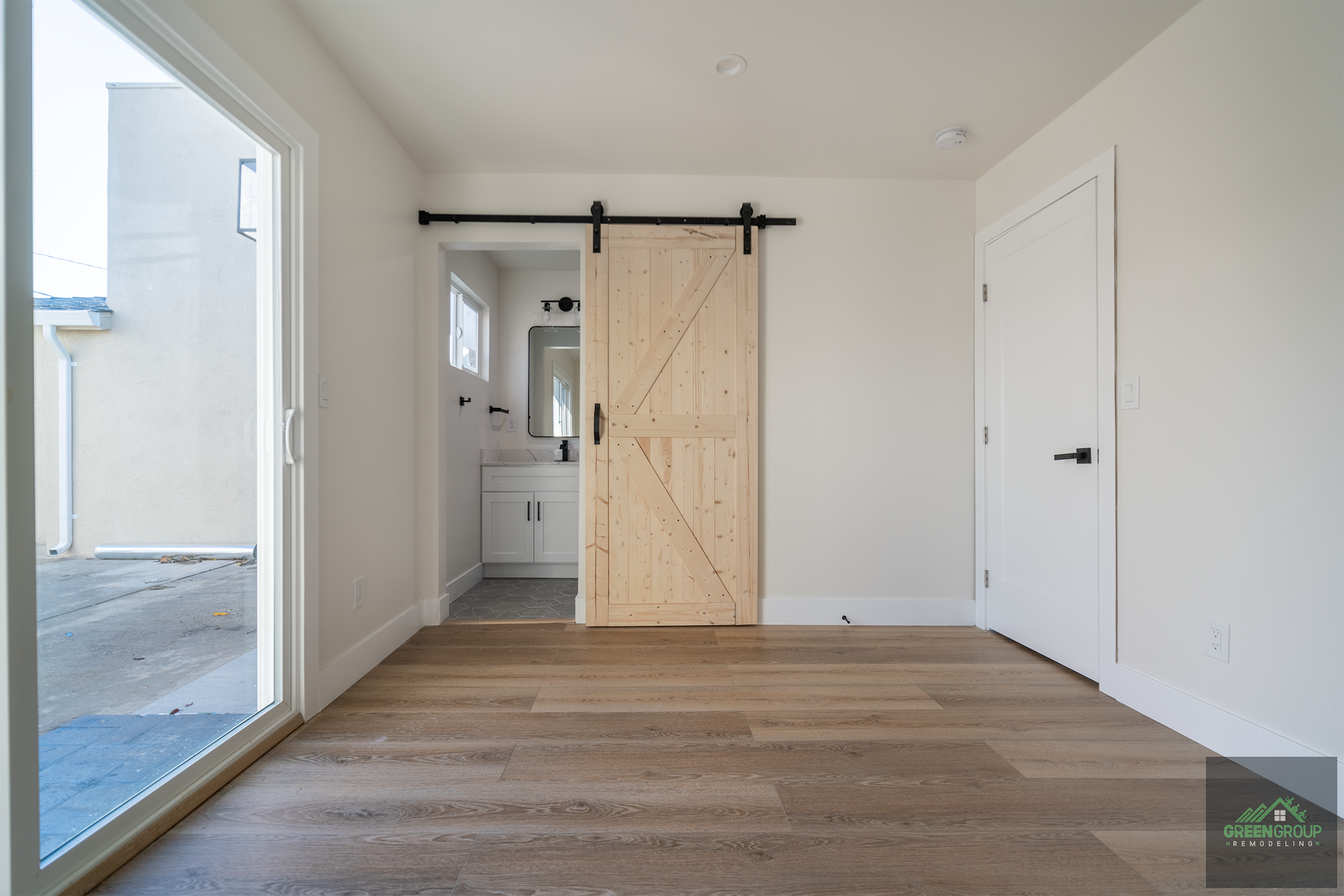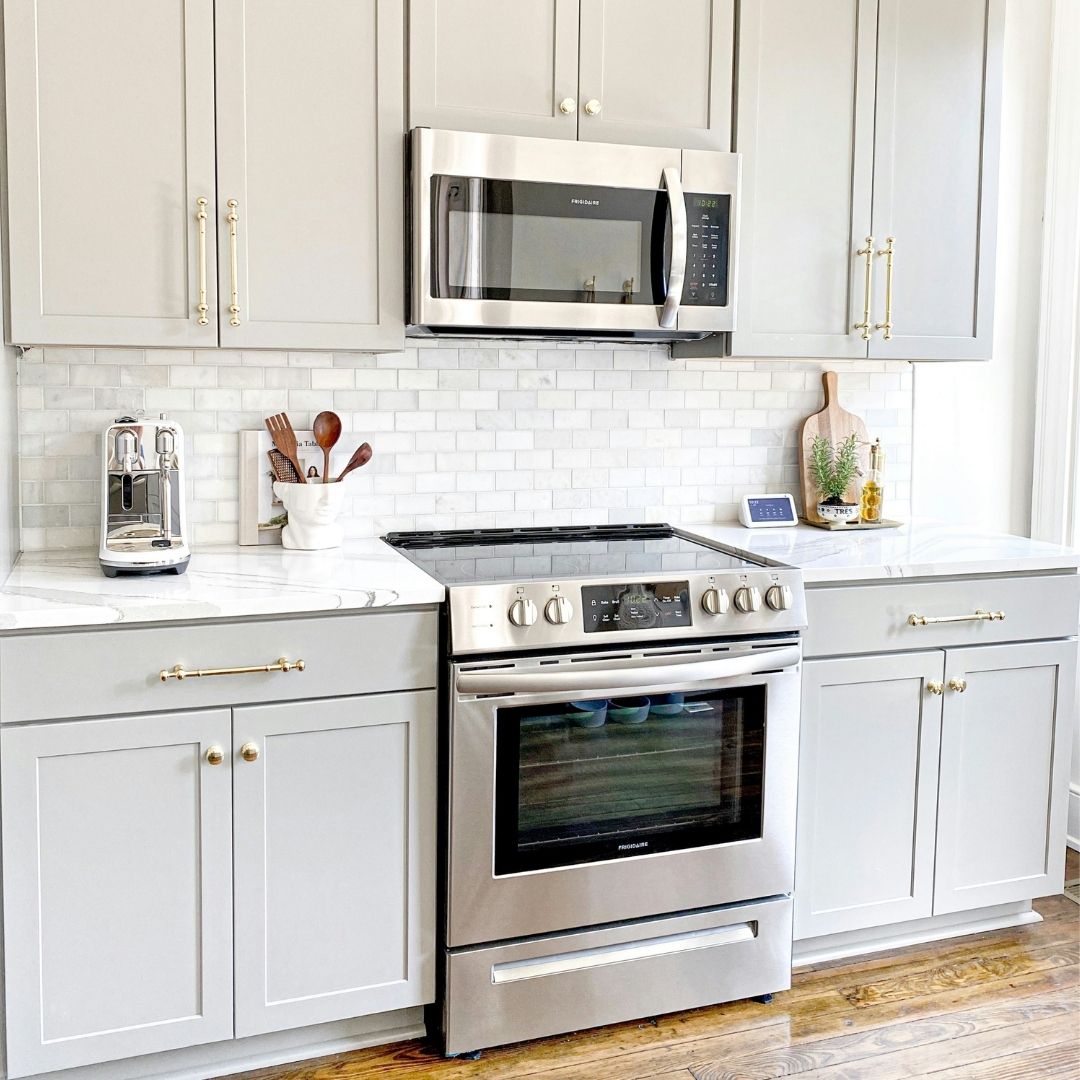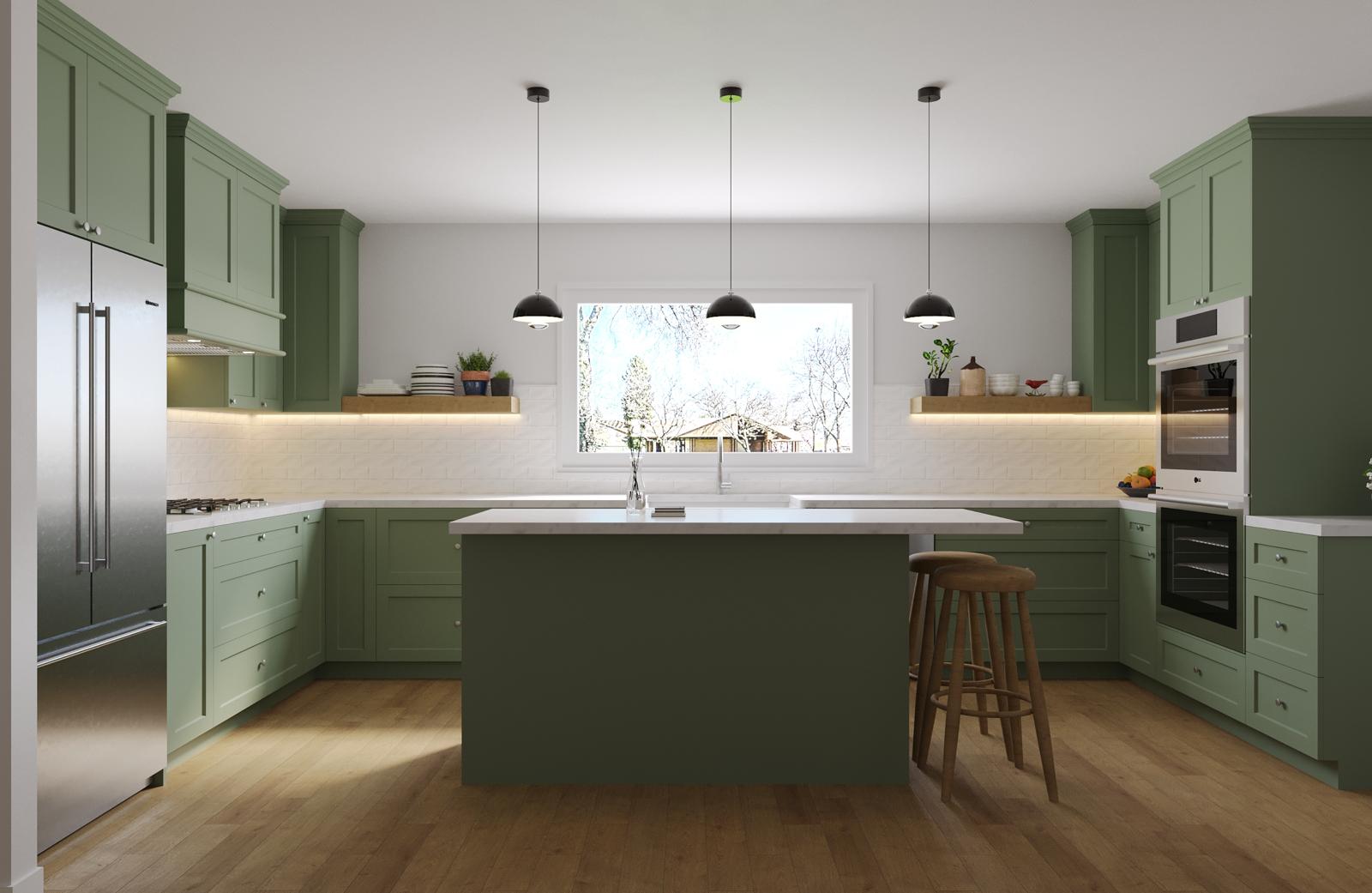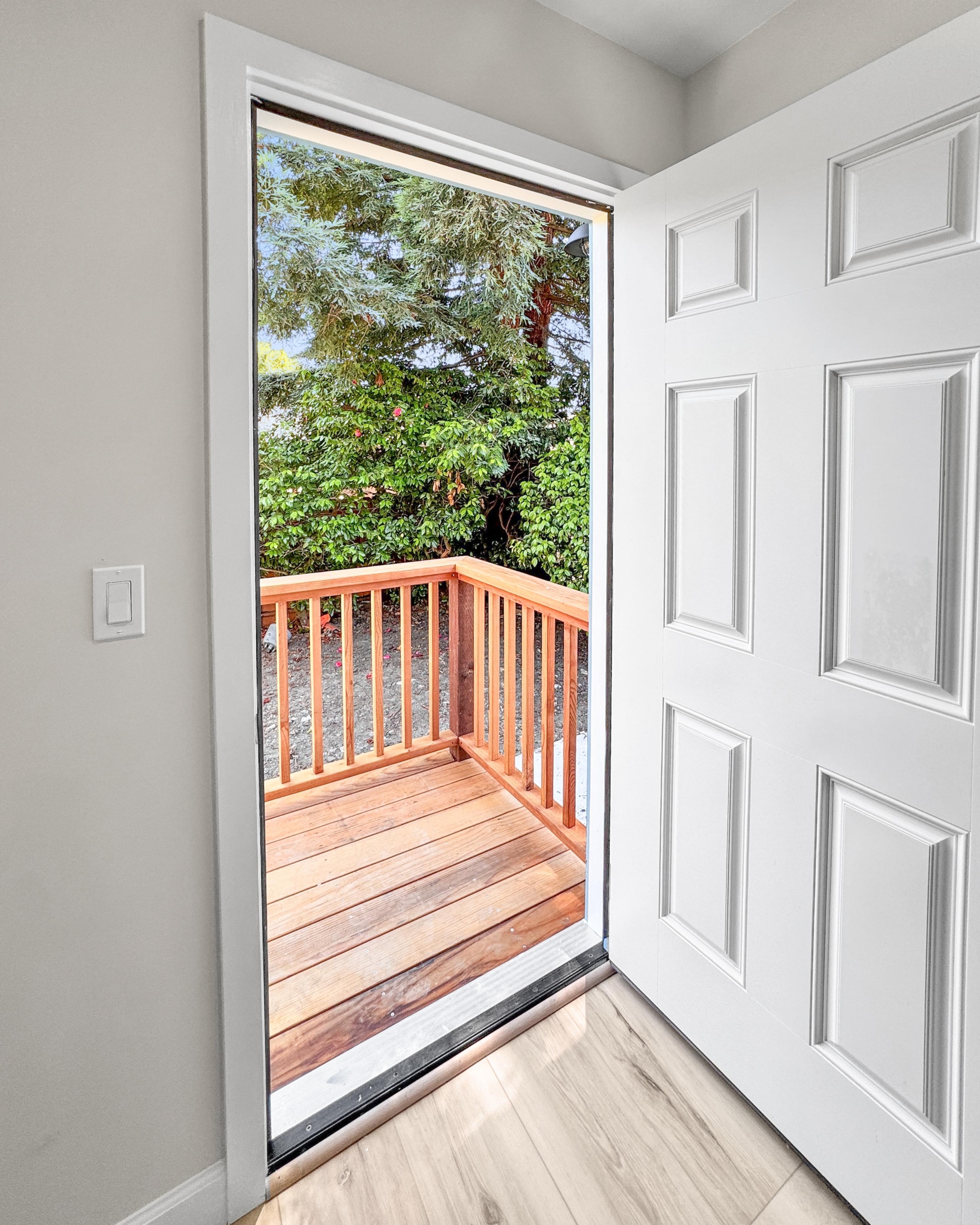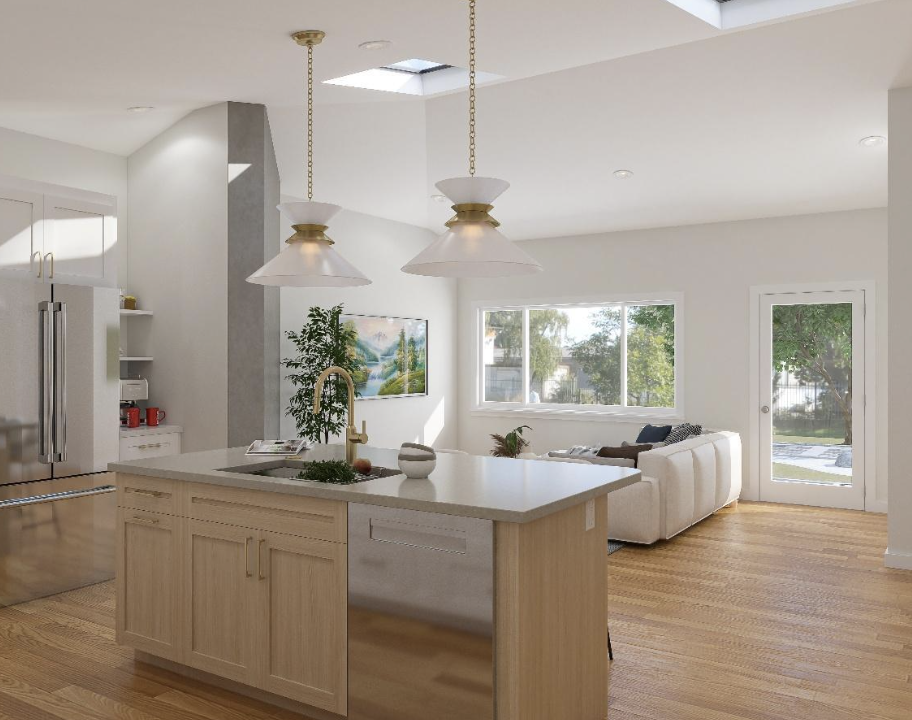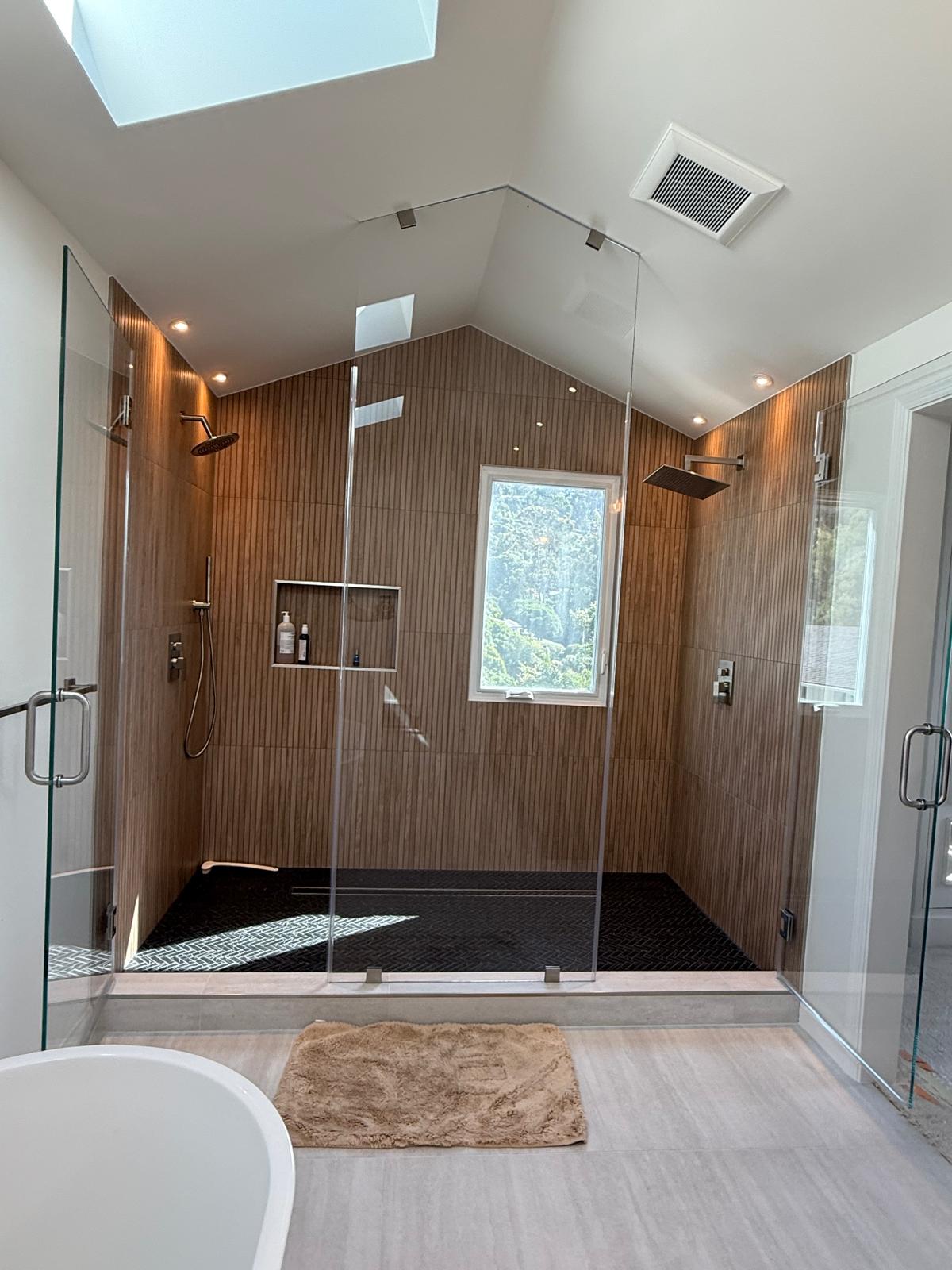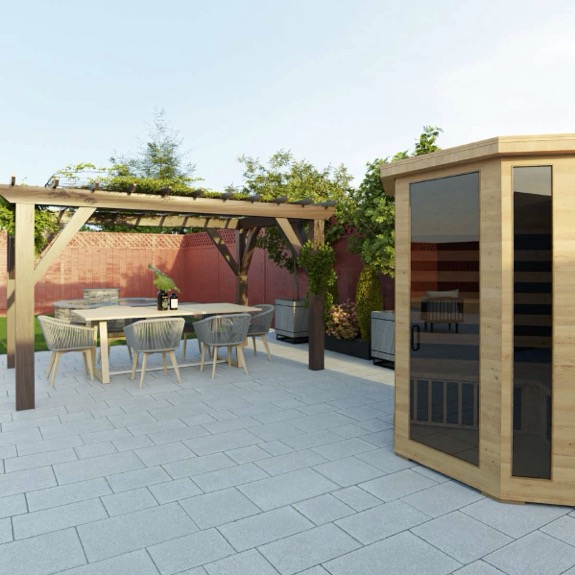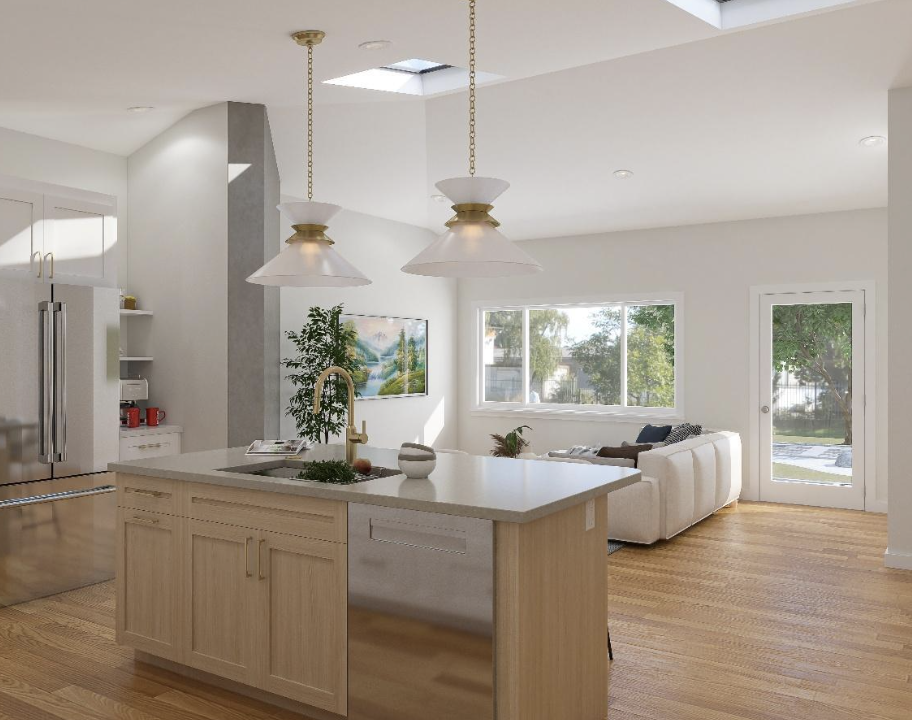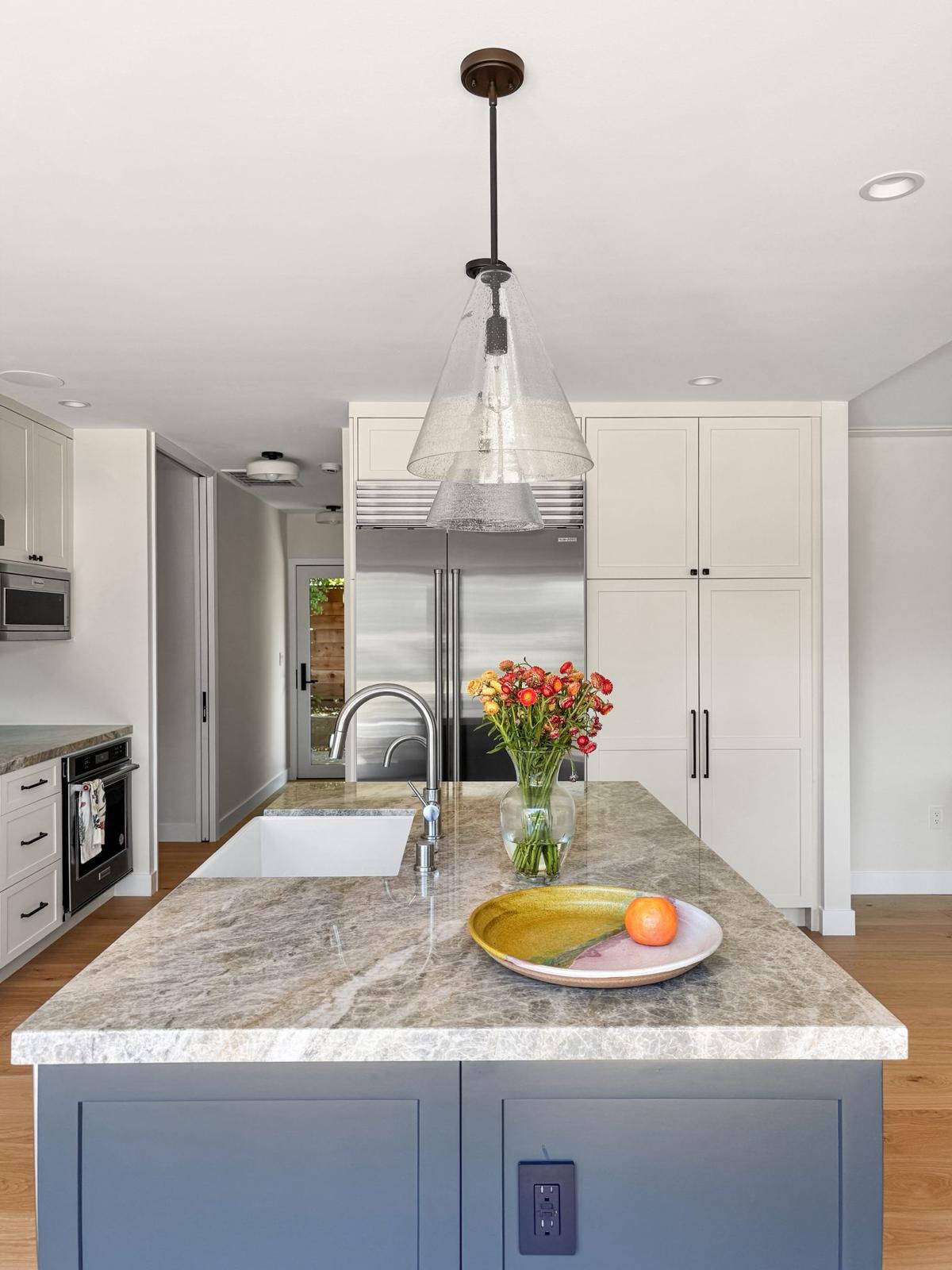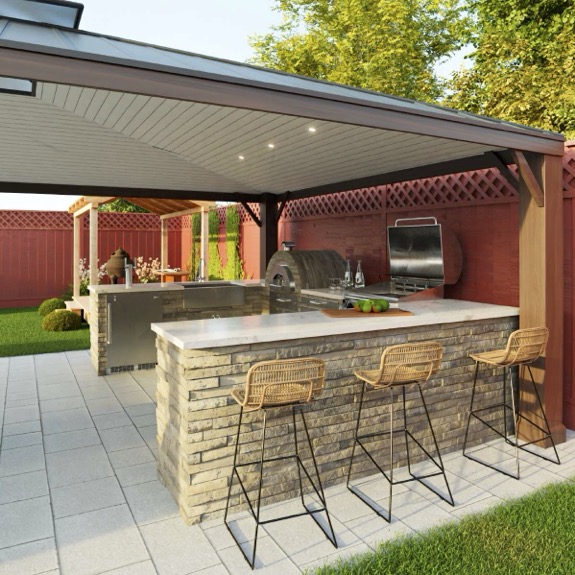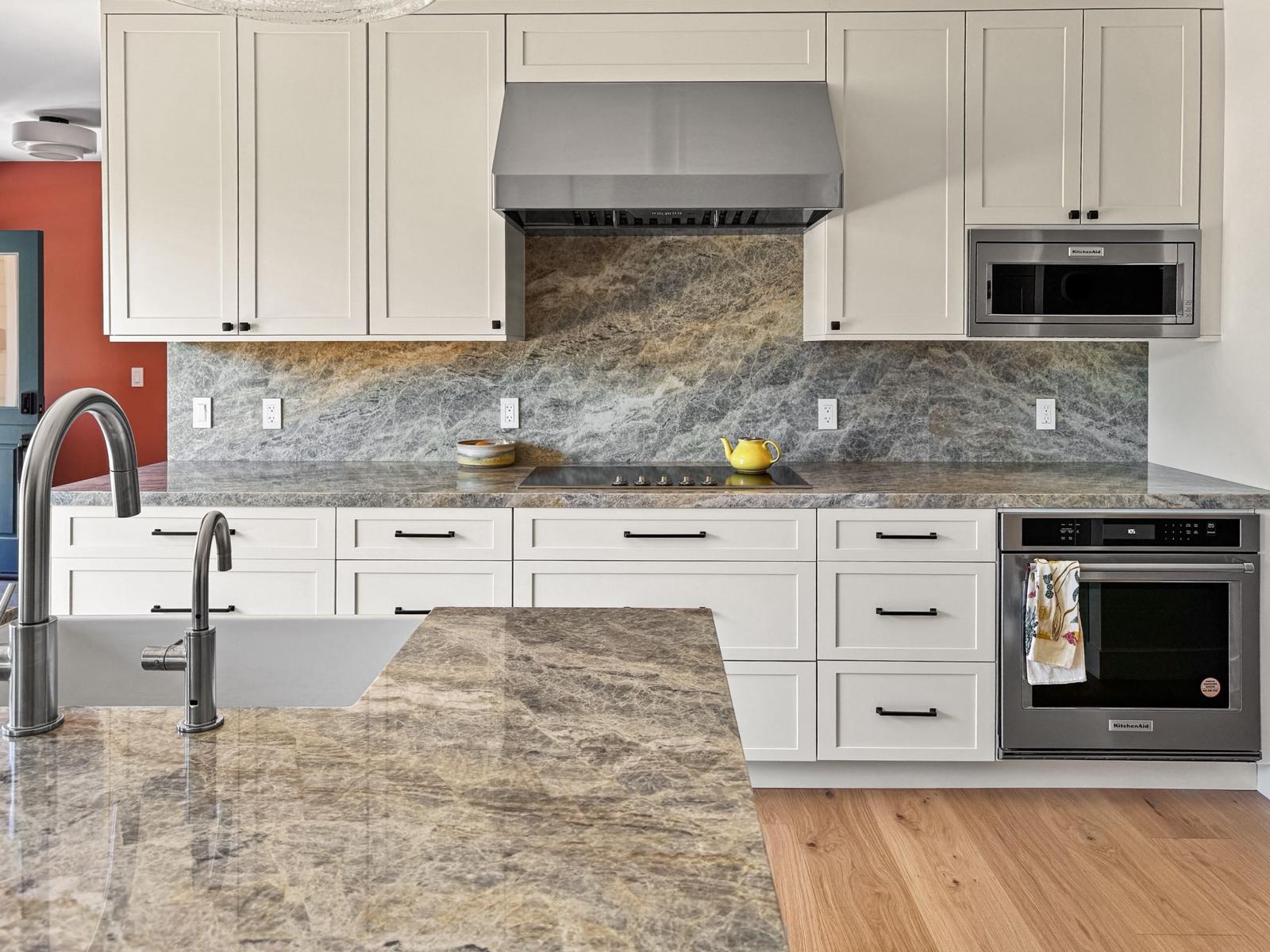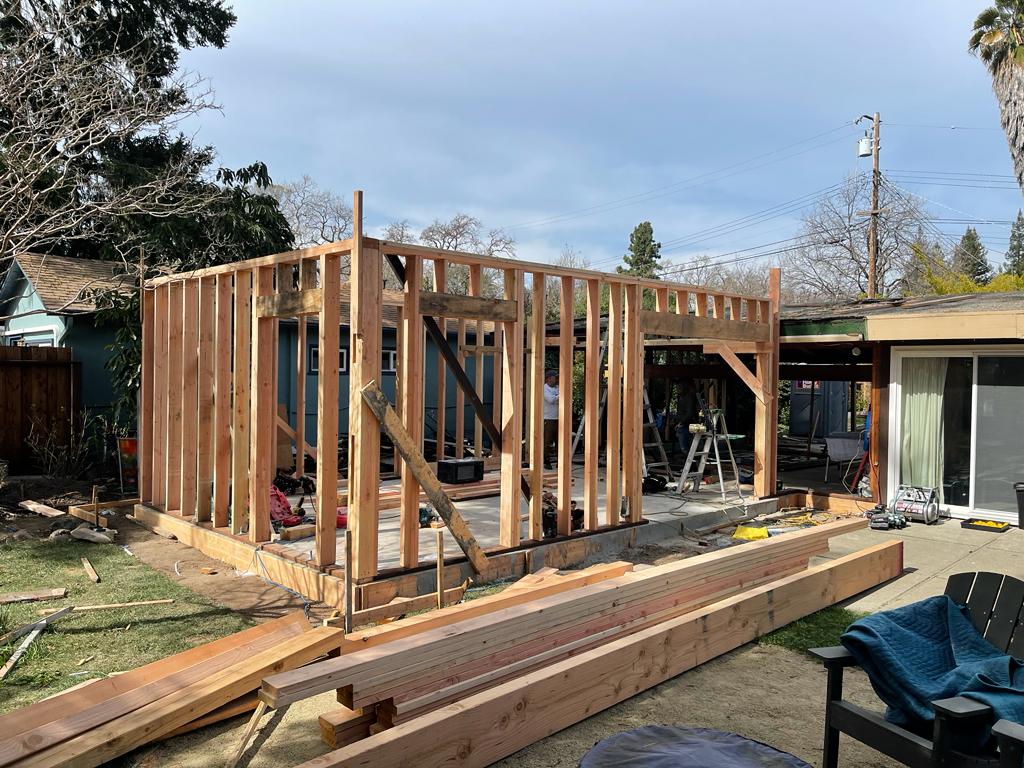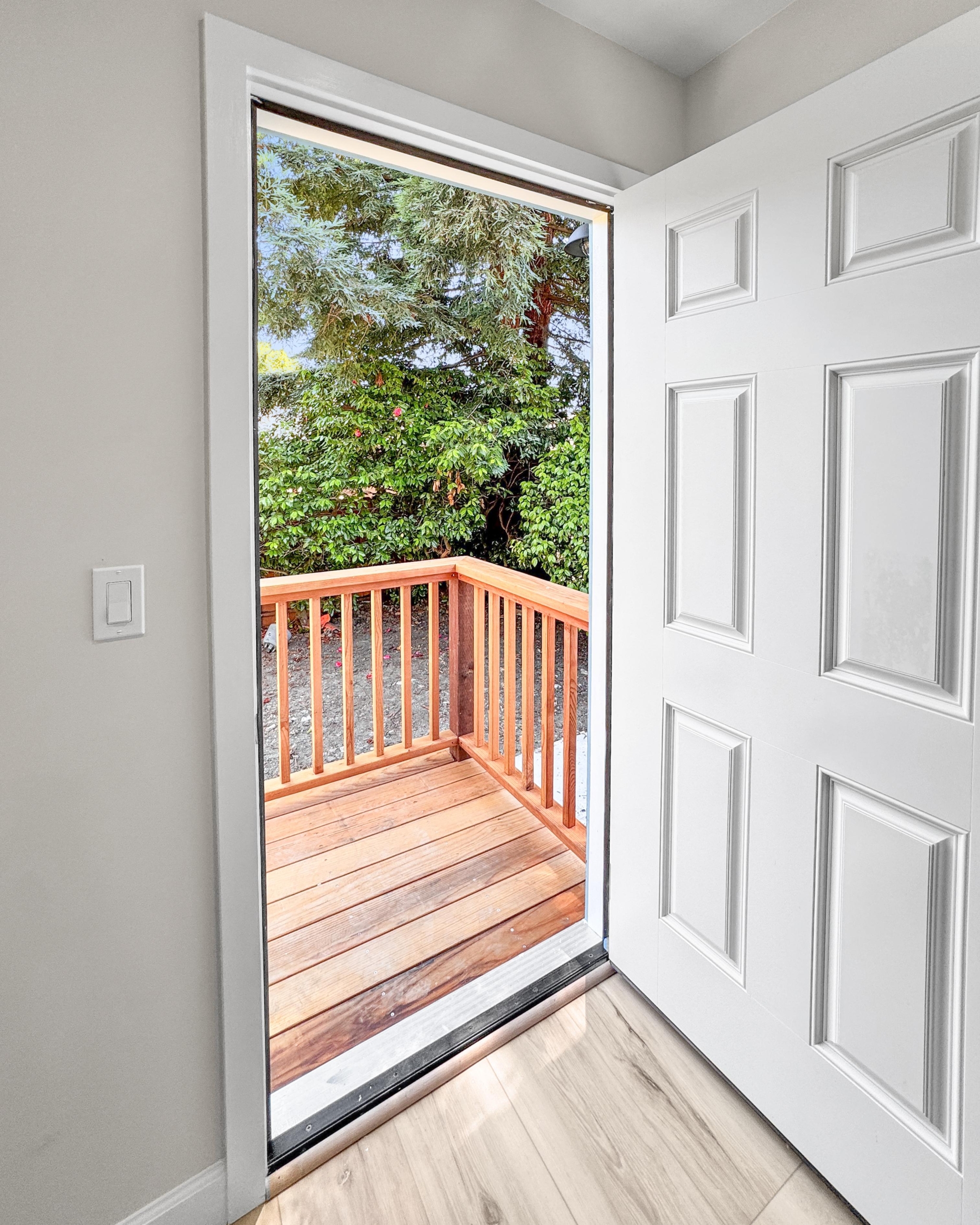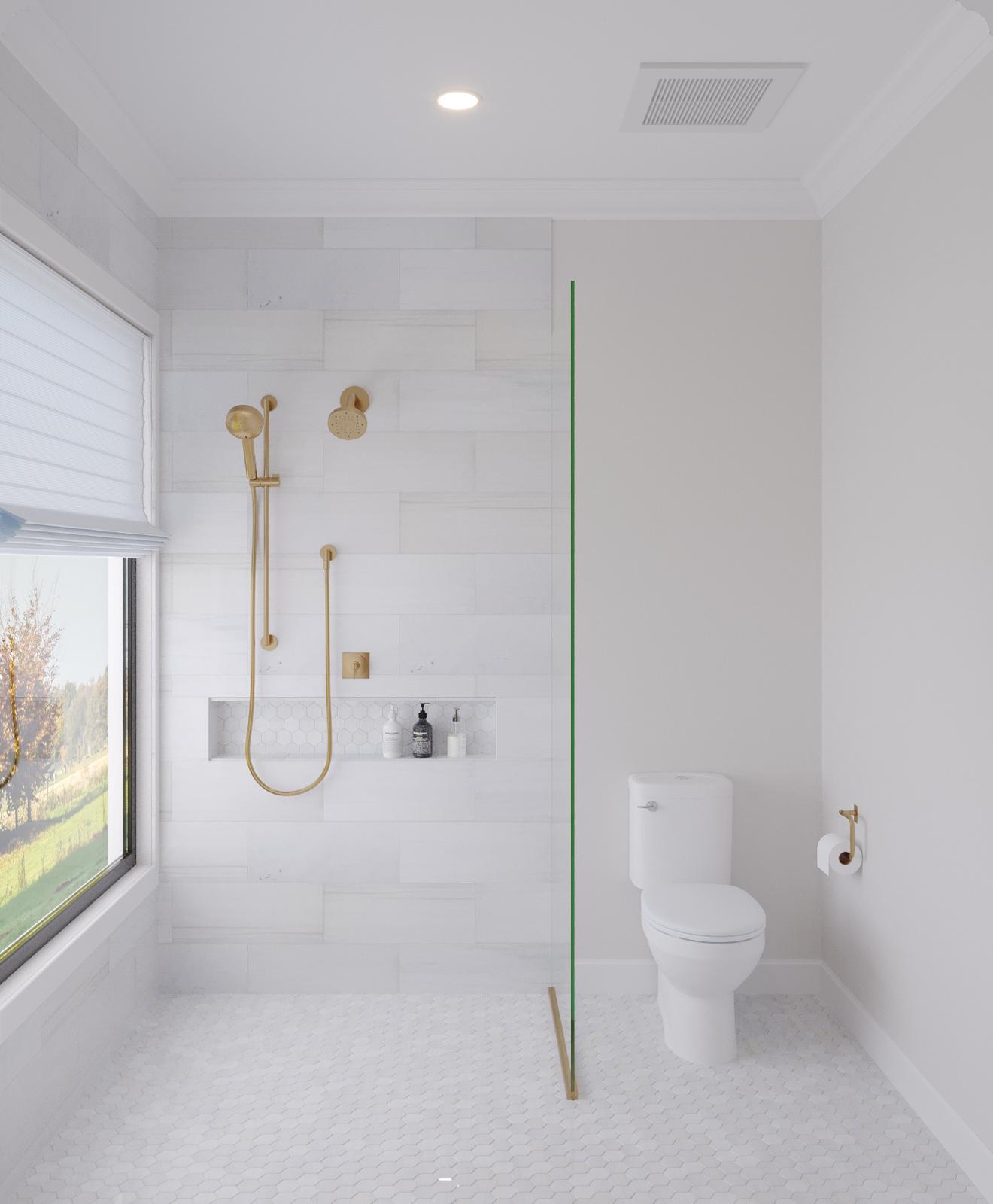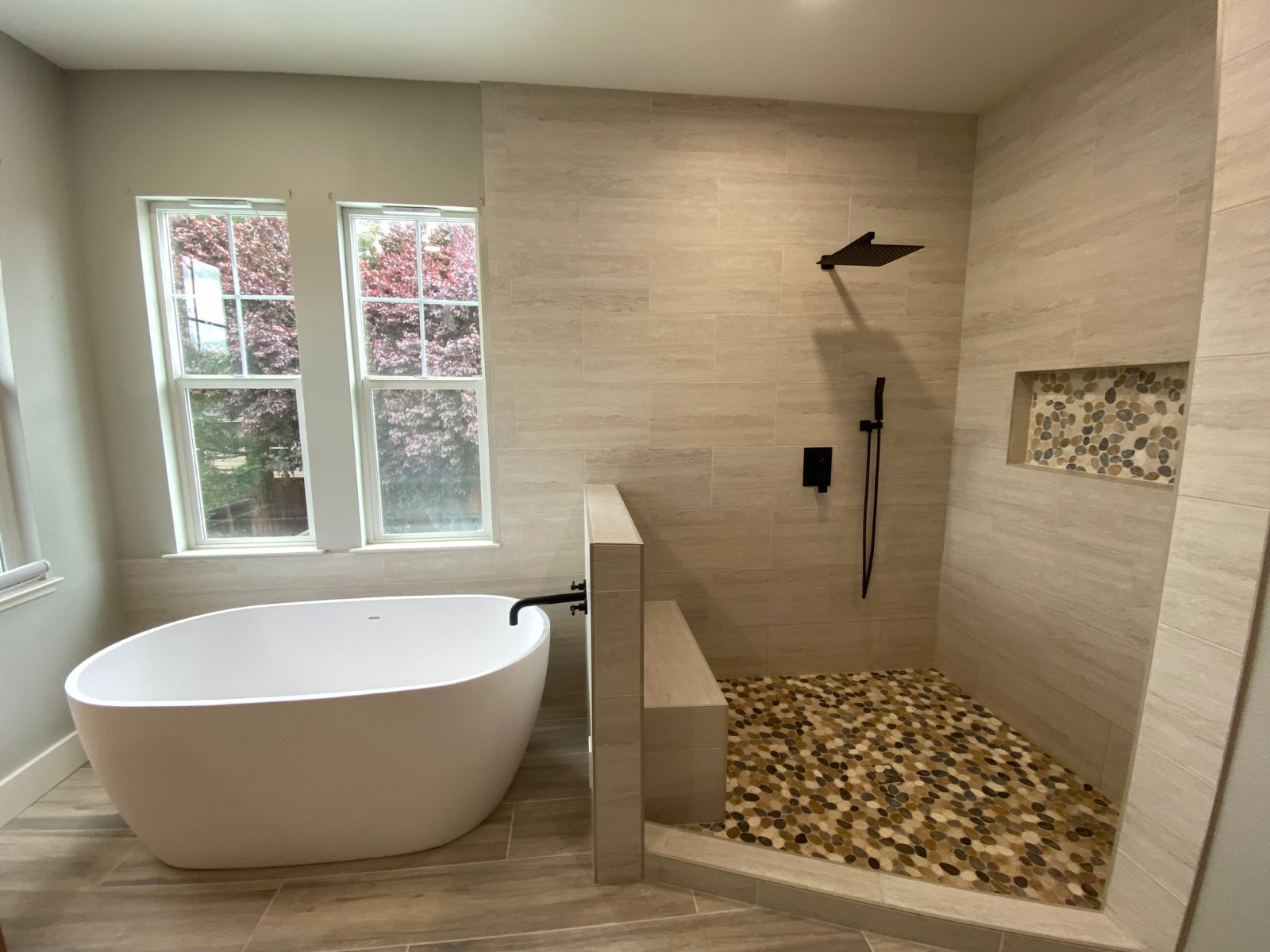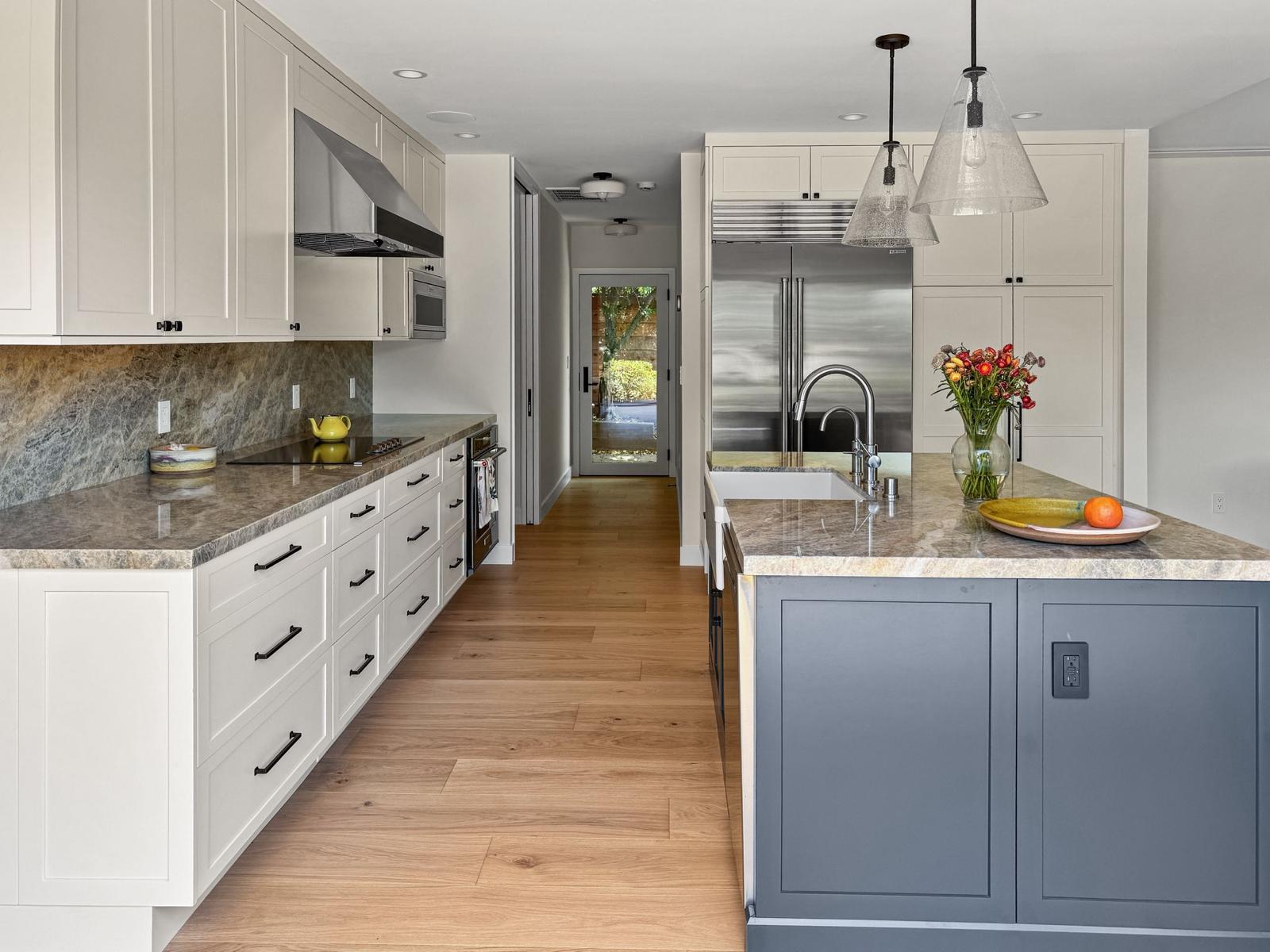When you’re planning a remodeling project, one of the key considerations should be how to reduce the environmental impact of the work. Green Group Remodeling specializes in creating beautiful, sustainable, and eco-friendly spaces. In this post, we will explore 10 Green Building Examples to help you minimize your remodeling footprint. These strategies not only benefit the environment but also contribute to healthier living spaces and long-term cost savings.
1. Use Sustainable Building Materials
Choosing sustainable materials is one of the most impactful ways to reduce your remodeling footprint. Sustainable materials like bamboo, reclaimed wood, and recycled metal are not only eco-friendly but also often more durable and aesthetically pleasing. For example, bamboo grows rapidly, making it a highly renewable resource. Using reclaimed wood can add unique character to your home while reducing the demand for new lumber. These Green Building Examples demonstrate how selecting the right materials can make a significant difference in sustainability.
2. Improve Energy Efficiency
Improving your home’s energy efficiency is another essential step. This can be achieved by upgrading insulation, installing energy-efficient windows and doors, and using LED lighting. High-quality insulation reduces the need for heating and cooling, thus lowering energy consumption. Energy-efficient windows and doors help to maintain a stable indoor temperature, and LED lights use significantly less energy than traditional incandescent bulbs. These Green Building Examples show how energy efficiency upgrades can reduce both environmental impact and utility costs.
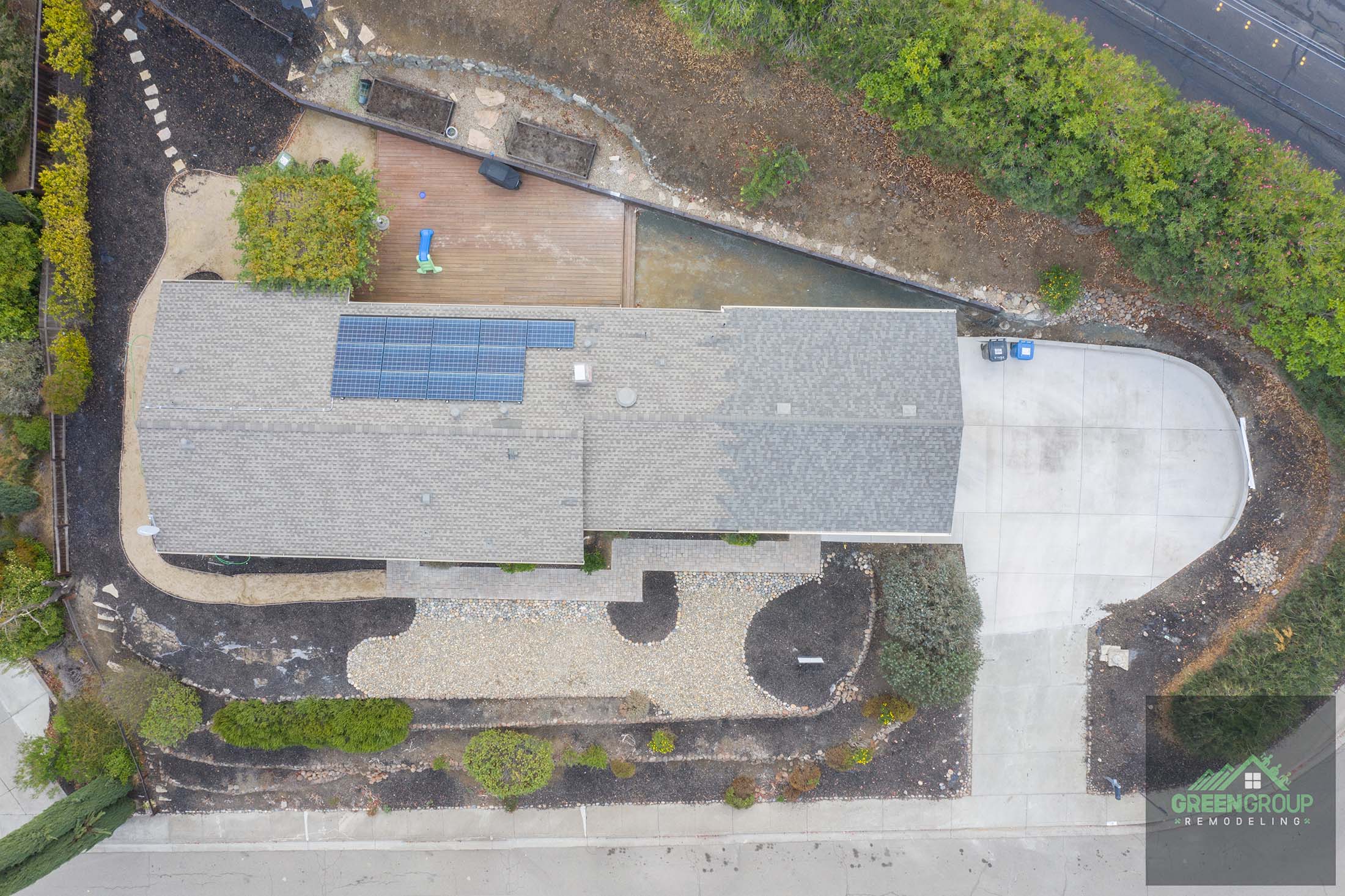
3. Incorporate Renewable Energy Sources
Incorporating renewable energy sources like solar panels, wind turbines, and geothermal heating and cooling systems can drastically reduce your home’s carbon footprint. Solar panels, for instance, can provide a significant portion of your home’s electricity needs, while geothermal systems use the stable temperature of the earth to heat and cool your home efficiently. These Green Building Examples illustrate the potential of renewable energy to create more sustainable homes.
4. Water Conservation Measures
Water conservation is another critical aspect of green building. Installing low-flow fixtures, rainwater harvesting systems, and greywater recycling can significantly reduce water usage. Low-flow fixtures use less water without sacrificing performance, while rainwater harvesting systems collect and store rainwater for irrigation and other non-potable uses. Greywater recycling systems treat and reuse wastewater from baths, sinks, and washing machines for landscaping and other purposes. These Green Building Examples highlight effective strategies for conserving water in your home.
5. Optimize Building Design
Optimizing your building’s design can enhance energy efficiency and reduce environmental impact. Passive solar design, for example, takes advantage of natural sunlight to heat your home, reducing the need for artificial heating. Natural ventilation systems can reduce the need for air conditioning by promoting airflow throughout the home. Additionally, green roofs and walls can provide insulation, reduce stormwater runoff, and improve air quality. These Green Building Examples demonstrate how thoughtful design can lead to more sustainable living spaces.
6. Choose Low-VOC Products
Using low-VOC (volatile organic compounds) products is crucial for maintaining good indoor air quality. Traditional paints, finishes, and adhesives often release harmful chemicals into the air. Low-VOC alternatives are much safer and can significantly improve the health and comfort of your living spaces. They also contribute to a healthier environment by reducing the release of pollutants. These Green Building Examples show the importance of selecting safe, environmentally-friendly products.
7. Implement Smart Home Technology
Smart home technology can greatly enhance the efficiency and sustainability of your home. Smart thermostats, for example, learn your schedule and adjust the temperature accordingly, reducing energy waste. Automated lighting systems ensure that lights are only on when needed, and energy monitoring devices help you track and manage your energy usage more effectively. These Green Building Examples highlight how technology can play a pivotal role in creating eco-friendly homes.
8. Recycle and Reuse Materials
Recycling and reusing materials is an effective way to reduce waste during a remodeling project. Salvaging existing materials like bricks, tiles, and fixtures can save money and resources. Donating unused materials to local organizations or resale shops is another way to keep valuable items out of landfills. By recycling and reusing, you can minimize the environmental impact of your project. These Green Building Examples emphasize the benefits of reducing waste through recycling and reuse.
9. Sustainable Landscaping
Sustainable landscaping practices can significantly reduce the environmental footprint of your home. Using native plants, which are adapted to the local climate, reduces the need for water and maintenance. Xeriscaping, or designing landscapes to reduce or eliminate the need for irrigation, is another effective strategy. Incorporating organic gardening practices, such as composting and avoiding chemical pesticides, promotes a healthy ecosystem. These Green Building Examples show how sustainable landscaping can create eco-friendly outdoor spaces.
10. Prioritize Indoor Air Quality
Maintaining good indoor air quality is essential for a healthy living environment. This can be achieved by using air purifiers, ensuring proper ventilation, and avoiding the use of toxic chemicals. Choosing furniture and building materials that do not emit harmful pollutants is also important. These Green Building Examples illustrate how prioritizing indoor air quality can contribute to a healthier home.
Green Building Examples — Conclusion
Adopting these green building practices can significantly reduce the environmental impact of your remodeling project. From using sustainable materials and improving energy efficiency to implementing smart home technology and sustainable landscaping, there are numerous ways to create a more eco-friendly home. By choosing Green Group Remodeling, you can be confident that your project will be handled with a commitment to sustainability and quality. Let’s work together to create beautiful, sustainable spaces that benefit both you and the environment. Contact Green Group Remodeling today to start your eco-friendly remodeling journey with these Green Building Examples in mind.
By integrating these Green Building Examples into your remodeling plans, you not only contribute to a healthier planet but also create a more comfortable and efficient home. Each of these strategies demonstrates that sustainable living is within reach and can be seamlessly incorporated into any remodeling project. Start your green remodeling journey today and experience the benefits of eco-friendly home improvements.

